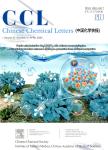Modification strategies for non-aqueous, highly proton-conductive benzimidazole-based high-temperature proton exchange membranes
作者机构:National Key Laboratory of Science and Technology on Advanced Composites in Special Environmentsand Center for Composite Materials and StructuresHarbin Institute of TechnologyHarbin 150080China School of Petroleum EngineeringChongqing University of Science and TechnologyChongqing 401331China School of PhysicsUniversity of Electronic Science and Technology of ChinaChengdu 610054China MIIT Key Laboratory of Critical Materials Technology for New Energy Conversion and StorageSchool of Chemistry and Chemical EngineeringHarbin Institute of TechnologyHarbin 150001China Chongqing Research InstituteHarbin Institute of TechnologyChongqing 401151China School of Mechanical EngineeringChengdu UniversityChengdu 610106China
出 版 物:《Chinese Chemical Letters》 (中国化学快报(英文版))
年 卷 期:2024年第35卷第4期
页 面:43-51页
核心收录:
学科分类:0808[工学-电气工程] 07[理学] 070205[理学-凝聚态物理] 08[工学] 080501[工学-材料物理与化学] 0805[工学-材料科学与工程(可授工学、理学学位)] 0703[理学-化学] 0702[理学-物理学]
基 金:supported by the Science Foundation of National Key Laboratory of Science and Technology on Advanced Composites in Special Environments the National Natural Science Foundation of China (No.12002109) sponsored by Natural Science Foundation of Chongqing, China (Nos.CSTC2021jcyj-msxm X10305, CSTB2022NSCQMSX0246, CSTB2022NSCQ-MSX0242, CSTB2022NSCQMSX1244, CSTB2022NSCQ-MSX0441, CSTB2022NSCQMSX1356, CSTB2022NSCQ-MSX1572, CSTB2022NSCQ-MSX1583, CSTB2022NSCQ-MSX0487, CSTB2022TFII-OFX0034) Chongqing Technology Innovation and Application Development Special Key Project (No.CSTB2023TIAD-KPX0010)
主 题:Benzimidazole Nonaqueous proton conduction Free volume Nanophase-separated structure Structure modification
摘 要:High-temperature proton exchange membranes(HT-PEMs) possess excellent thermal and outstanding electrochemical stability, providing an avenue to realize high-temperature proton exchange membranes fuel cells(HT-PEMFCs) with both superior power density and long-term durability. Unfortunately, polybenzimidazole(PBI), a typical material for conventional HT-PEMs, fails to compromise the high nonaqueous proton conductivity and high mechanical properties, thus hindering their practical *** efficient nonaqueous proton conduction is crucial for HT-PEMFC, and many insightful research works have been done in this area. However, there still lacks a report that integrates the host-guest interactions of phosphoric acid doping and the structural stability of polymers to systematically illustrate modification strategies. Here, we summarize recent advancements in enhancing the nonaqueous proton conduction of HT-PEMs. Various polymer structure modification strategies, including main chain and side group modification, cross-linking, blocking, and branching, are reviewed. Composite approaches of polymer, including compounding with organic porous polymers, filling the inorganic components and modifying with ionic liquids, etc., are also covered in this work. These strategies endow the HT-PEMs with more free volume, nanophase-separated structure, and multi-stage proton transfer channels, which can facilitate the proton transportation and improve their performance. Finally, current challenges and future directions for further enhancements are also outlined.



